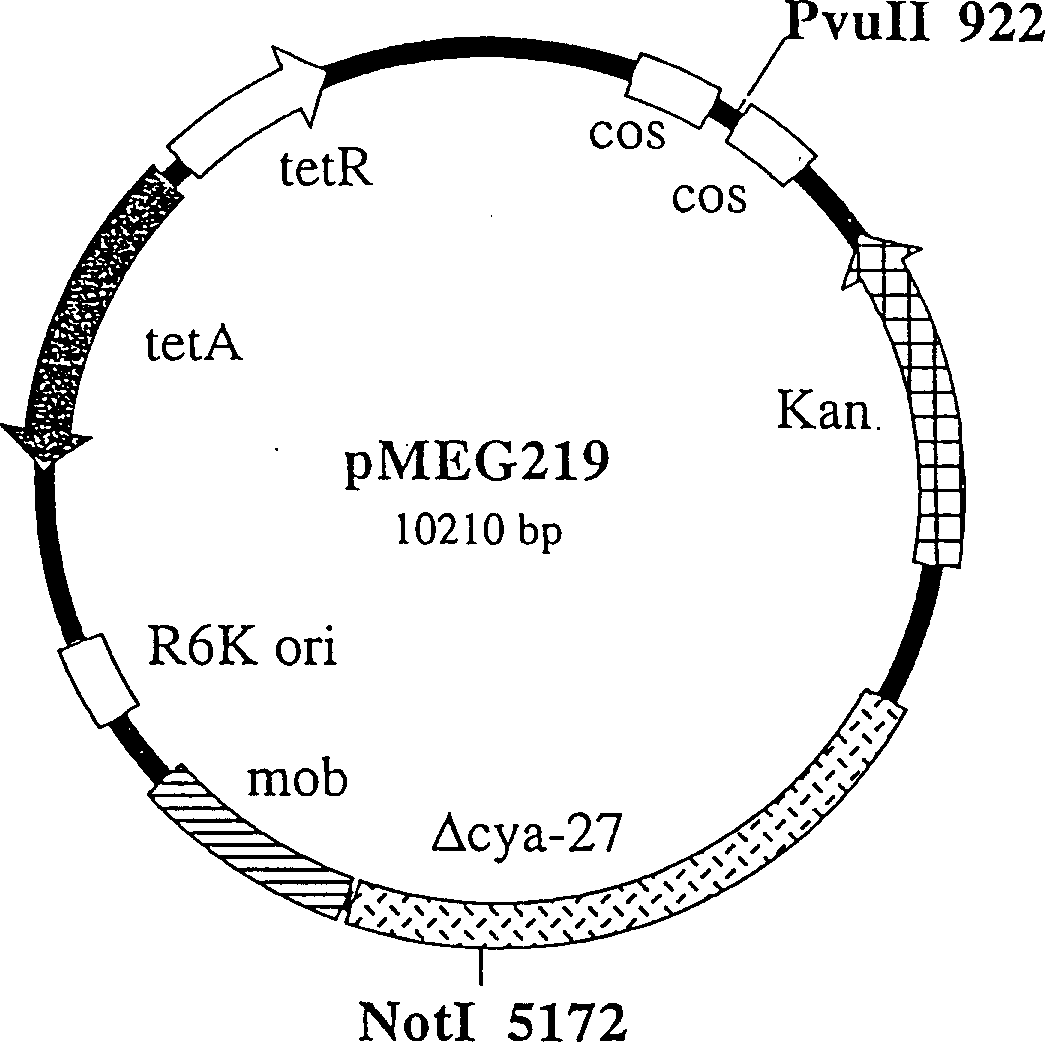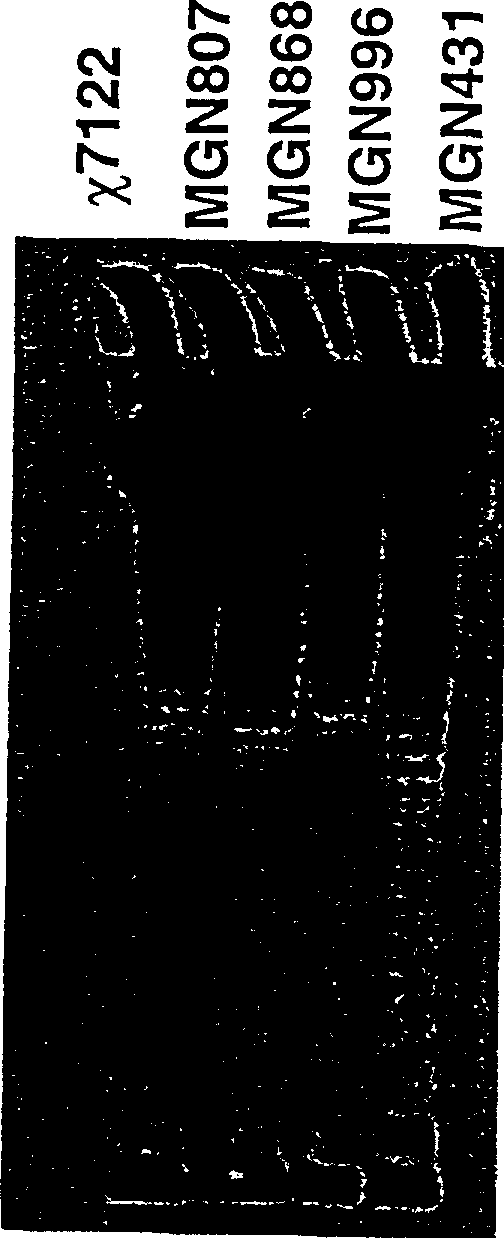Live attenuated i(salmonella) vaccines to control avian pathogens
A Salmonella vaccine technology, applied in the field of attenuated Salmonella live vaccines to control poultry pathogens, can solve problems such as unreported
- Summary
- Abstract
- Description
- Claims
- Application Information
AI Technical Summary
Problems solved by technology
Method used
Image
Examples
preparation example Construction
[0025] Recombinant Salmonella strains for use in vaccines are prepared by incorporating the required AP G-N The microbial rfb / rfc gene clusters are integrated into the chromosomes of appropriate Salmonella strains. The Salmonella strains used as carrier bacteria can be derived from Salmonella bacteria that can colonize birds, especially poultry. These species include, but are not limited to: Salmonella typhimurium, Salmonella enteritidis, Salmonella gallinarum, Salmonella juvenile, Salmonella choleraesuis subsp. Salmonella subspecies, Salmonella Kentucky, Salmonella infantis, Salmonella Schwarzenegrund, Salmonella Sao Paulo, Salmonella Brandenburg, S. instanbul, Salmonella Cuba, Salmonella Bradney, Salmonella Blinderruber, Salmonella Livingstone, Salmonella beta, Salmonella california, Salmonella Senftenburg, and salmonella mbandaka. As used herein, "colonizing" refers to Salmonella species capable of attaching to, invading and remaining in one or more of the following tissu...
Embodiment 1
[0055] This example illustrates the construction of an attenuated recombinant Salmonella typhimurium strain co-expressing Salmonella typhimurium group B LPS and Escherichia coli O78 LPS.
[0056] Attenuation strategy Salmonella typhimurium strains with deletions in the cya and crp genes have been shown to be attenuated and immunogenic in chickens (Hassan et al., Res. Microbiol. 141:839-850, 1990; Porter et al., Avian Dis.37:265-273,1993), in addition, can elicit a protective immune response against wild-type Salmonella typhimurium challenge (Hassan et al., supra, Hassan et al., Infect.Immun.62:5519- 5527, 1994). Biochemically, deletions in cya or crp will result in the inability to ferment various sugars, including maltose (Botsford et al., Microbiol. Rev. 1992). Therefore, the ΔcyaΔcrp S. typhimurium vaccine strain forms white colonies on MacConkey maltose medium, while the wild-type S. typhimurium strain forms red colonies. Therefore, a simple method can be used to distingu...
Embodiment 2
[0111] This example illustrates the Salmonella typhimurium strain MGN996 (Δcya-28::rfbO78,Δcrp-28,Mot + ) to colonize chicks and protect them against challenge with wild-type APEC strain x7122.
[0112] All chicks used in the experiments described in Examples 2-4 were white Leghorn chickens hatched from fertilized eggs of Specific Pathogen Free (SPF) chickens obtained from Specific Pathogen Free Avian Services (SPAFAS, Roanoke, IL). The eggs were grown and incubated in a Humidaire incubator / incubator at the School of Biology at Washington University (St. Louis, MO).
[0113] Birds were vaccinated 2 times in this experiment: first at hatch day and then again at 14 days of age. On hatch day with 4.6×10 6 CFU / chicken of MGN996-vaccinated chicks. Place 10-15 chicks in a Plexiglas spray box and deliver the inoculum with a stainless steel Sure Shot Model A sprayer (Milwaukee Sprayer Manufacturing Co., Inc., Milwaukee, WI) pressurized to 100 psi for a coarse spray of vaccine Inoc...
PUM
 Login to View More
Login to View More Abstract
Description
Claims
Application Information
 Login to View More
Login to View More - R&D
- Intellectual Property
- Life Sciences
- Materials
- Tech Scout
- Unparalleled Data Quality
- Higher Quality Content
- 60% Fewer Hallucinations
Browse by: Latest US Patents, China's latest patents, Technical Efficacy Thesaurus, Application Domain, Technology Topic, Popular Technical Reports.
© 2025 PatSnap. All rights reserved.Legal|Privacy policy|Modern Slavery Act Transparency Statement|Sitemap|About US| Contact US: help@patsnap.com



